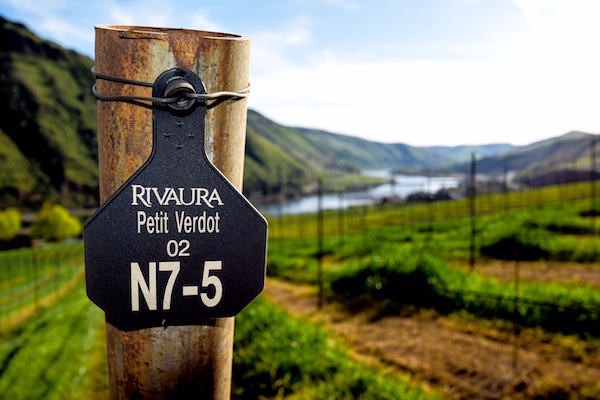
Perhaps it did take a small act of Congress, but the Lewis-Clark Valley American Viticultural Area becomes official today.
The Department of Treasury’s Alcohol and Tobacco Tax and Trade Bureau (TTB) issued a statement Tuesday that it will publish a final rule in the Federal Register to establish the Lewis-Clark Valley AVA, identifying a 306,658-acre segment within the historic grape-growing region surrounding Lewiston, Idaho, and Clarkston, Wash.
“We read the press release five or six times, and we both got teary,” said winemaker Coco Umiker, who owns Clearwater Canyon Cellars in Lewiston with her husband/vineyard manager, Karl. “It’s almost surreal. We’ve been fighting for it and wanting it for so long.”
Starting May 20, wineries in Idaho and Washington state will be permitted to use Lewis-Clark Valley on labels. The timing of today’s news could not be better for Alan Busacca, the geologist who wrote the complex petition that not only creates Idaho’s third AVA but also shaves 57,019 acres from the massive bi-state Columbia Valley.
“I woke up at 6 o’clock today to check my email, kind of like a kid on Christmas morning,” Busacca said. “I heard a rumor that, ‘You might want to check your email.’ ”
The Lewis-Clark Valley marks the third successful AVA petition orchestrated by Busacca, so he’s developed relationships and a history of working closely with the TTB. This one touches on four Idaho counties – Clearwater, Latah, Lewis and Nez Perce – as well as Asotin, Garfield and Whitman counties across the Snake River in Washington state. It also frayed the emotions of many for a variety of reasons.
“I was in my 20s when we started this us,” Umiker said with a chuckle. “It only took seven years.”
Economic conference to toast Lewis-Clark Valley
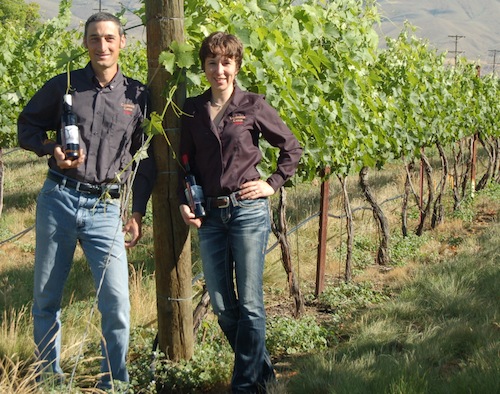
Tonight in Lewiston, the Clearwater Economic Development Association will celebrate anticipated news of the AVA as the long-awaited centerpiece of its annual meeting. In fact, months ago the CEDA began developing the program around the implications of what the Lewis-Clark Valley AVA will mean to the community. The federal government designates AVAs to help vintners describe the origin of their wines and to allow consumers to better identify wines, and the CEDA was among several agencies to help fund work on the AVA petition.
Idaho now has three AVAs, starting in 2007 with the Snake River Valley – the watershed moment for the state’s wine industry – and following the Eagle Foothills AVA last November.
“This makes two AVAs for Idaho in the past six months,” said Moya Dolsby, executive director of the Idaho Wine Commission. “The history of wine in the Lewis-Clark Valley began in the 1860s, which a lot of people don’t know, so this will help educate people on the wine industry of that region.”
Busacca, Clearwater Canyon Cellars and Colter’s Creek Winery were confident the complex petition would be approved. However, they were confused and concerned by the delay – especially with the festivities scheduled around this week’s CEDA convention.
“The funny thing about this is our huge celebration – which is (today) – has been planned for a year,” Coco Umiker said. “Talk about making you pucker.”
An appeal was made to Sen. Maria Cantwell (D-Wash.) and Sen. Mike Crapo (R-Idaho), so on April 6, they signed and sent a bipartisan letter to the Treasury Department that “strongly urged” the Lewis-Clark Valley AVA petition to be submitted for rulemaking as soon as possible.
“I couldn’t be more thrilled that our representatives in Congress – Sen. Cantwell and Sen. Crapo – stepped up and gently nudged the TTB to get this through,” Busacca said. “I don’t think it would have happened on this timetable without their help.
“There are economic development opportunities waiting on this AVA and an upcoming tourist season that could have been lost,” Busacca added. “The senators made the argument that probably helped win the day.”
Umiker said, “I do appreciate the fact that the TTB is not rubber-stamping everything. The process was rigorous, which makes this sweeter.”
Washington, Idaho embrace collaboration
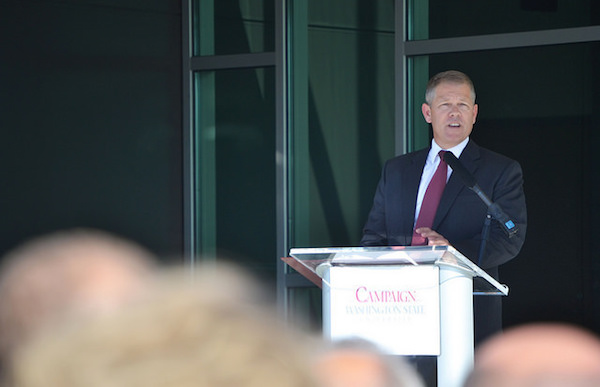
Steve Warner, president of the Washington State Wine Commission in Seattle, is excited not only about Washington’s 14th AVA but also with the opportunity to work more closely with the burgeoning Idaho wine industry.
“We’re excited,” he told Great Northwest Wine. “I think we have pretty good examples of working with cross-border AVAs with the Columbia Valley, the Walla Walla Valley and the Columbia Gorge. The Lewis-Clark Valley is aligned with that approach.”
In fact, Warner was driving to Lewiston for the CEDA celebration as he spoke with Great Northwest Wine.
“When it comes to wine, we think AVA boundaries trump state boundaries,” he said.
Warner added that he looks forward to working closely with Dolsby. She got her start with the Washington State Wine Commission more than a decade ago, and Warner said he’s pleased with what she has accomplished in Idaho.
Dolsby also will be speaking at the CEDA meeting, where nearly 400 are expected to gather.
“Having this AVA will increase wine sales in Northern Idaho and make the wine industry a tourism draw for that region,” Dolsby said. “There will be a lot of buzz in the wine world with this new AVA. People will wonder what’s going on in Lewiston and see that it’s not a long drive from Walla Walla or Spokane. Parents who have children going to college at either WSU or Idaho will want to go see these wineries while they are visiting their kids in the area. That’s my hope.”
Acclaim grows for Clearwater Canyon, Colter’s Creek
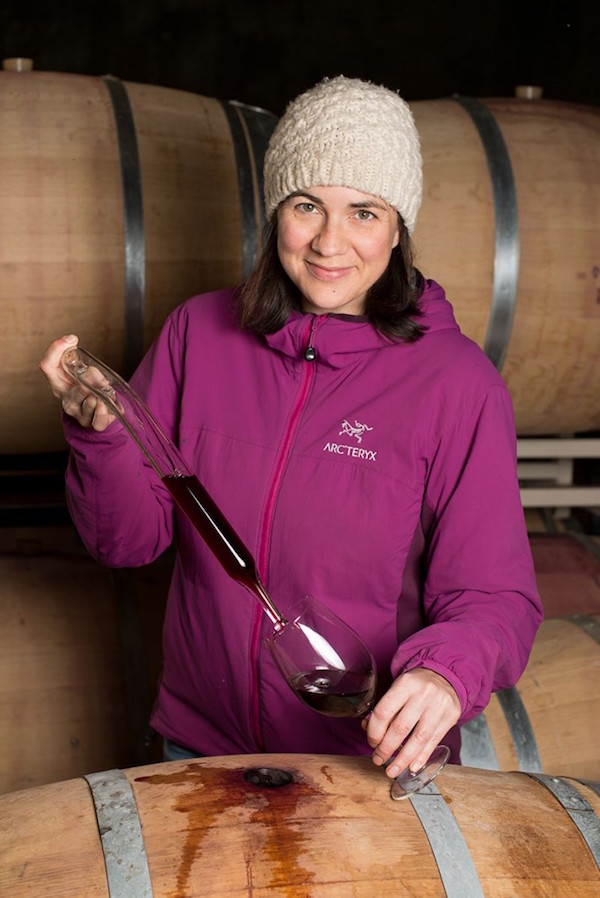
“We believe in this place, and we are going to turn heads with the wines that are made here,” Coco Umiker said.
She pointed to critical acclaim for both Colter’s Creek – wines made by Melissa Sanborn and grown by husband Mike Pearson – and Clearwater Canyon as touchstones and reasons for continued optimism.
“The Colter’s Creek 2013 GSM won a gold medal and best Idaho wine at the Cascadia (Wine Competition). Our (2013) Syrah made the Great Northwest Wine Top 100 list, and our Merlot got a double Platinum at last year’s Platinum Competition,” Umiker said. “That was for a Merlot, for Pete’s sake. Those three wines were all from L-C Valley fruit.”
That Merlot and the Syrah are the products of Umiker Vineyard, established in 2003 at 1,350 feet elevation on their century farm.
“When we planted our vineyard, Karl said we should try to get an AVA,” Coco said. “I thought he was nuts. I would not have thought we would be able to do it with such little acreage planted in the area.
“Then our buddies Mike and Melissa took over the Juliaetta Vineyard, and they are just as committed as we are to producing world-class wines with local grapes. So is Jim Arnett at his vineyard and Rock n’ J Vineyard,” Umiker continued. “We thought, ‘OK, now we’ve got a movement, and people started getting excited.”
Van Duzer Corridor petition moves up ladder
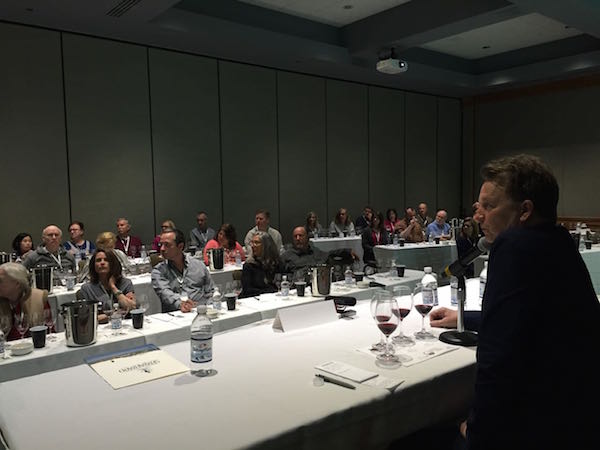
Pacific Northwest vintners have successfully petitioned the TTB several times in the past 14 months, and the next rulemaking for the region could well involve the establishment of the Van Duzer Corridor AVA within the Willamette Valley AVA.
Earlier this month, the TTB formally expanded the 5,360-square mile Willamette Valley AVA by approximately 29 square miles to include iconic King Estate Winery.
A year ago, controversy didn’t stop the establishment of The Rocks District of Milton-Freewater – an Oregon AVA within the Walla Walla Valley.
“The big hiccup was that we prepared an entire petition and submitted it at the same time the TTB said any partial overlap of an AVA wouldn’t be allowed,” Busacca said.
“It would have been easier just to have the (Lewis-Clark Valley AVA) be an Idaho AVA and have it stop at the state line, but that would have been bastardizing the process. There are the Clarkston Heights and other benchlands and canyon lands on the Washington side that match in terms of geology and soils to what’s on the Idaho side. This establishes the Lewis-Clark Valley on the footprint we wanted to, and it shows we made the scientific case for that.”
Royal Slope looms as Washington’s next AVA

Today’s rulemaking means Busacca – a retired Washington State University professor – can switch his entire focus toward his proposal to establish the Royal Slope AVA, an agricultural region near the town of Royal City, Wash., within the Columbia Valley and north of the Wahluke Slope AVA. The Royal Slope AVA would share a border for about 5 miles with Ancient Lakes of Columbia Valley AVA.
“We’re more than halfway into the process, and I would like to imagine that it will be ready to be submitted in late summer,” Busacca said. “Knock on wood, please, if you have some nearby.”
Busacca crafted the Wahluke Slope AVA, established in 2006, and followed with the Lake Chelan AVA in 2009.

Leave a Reply